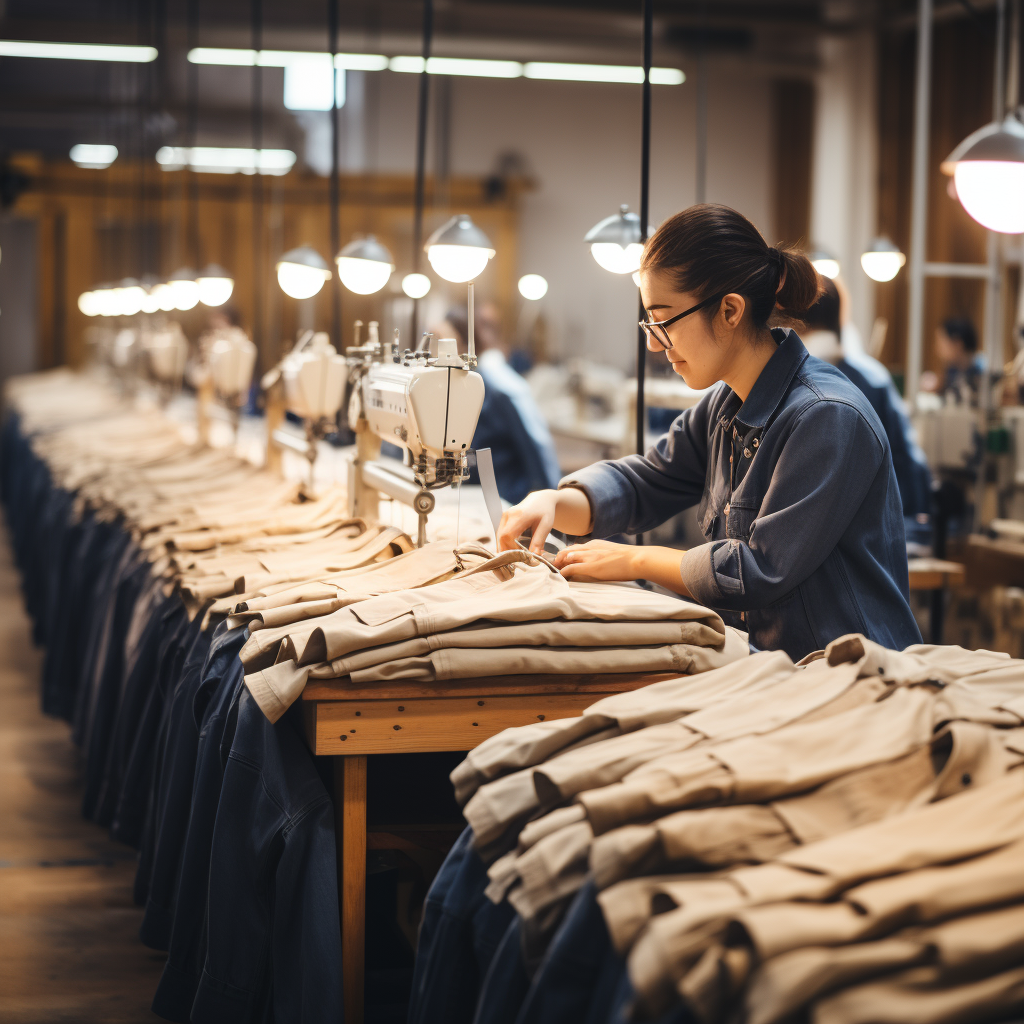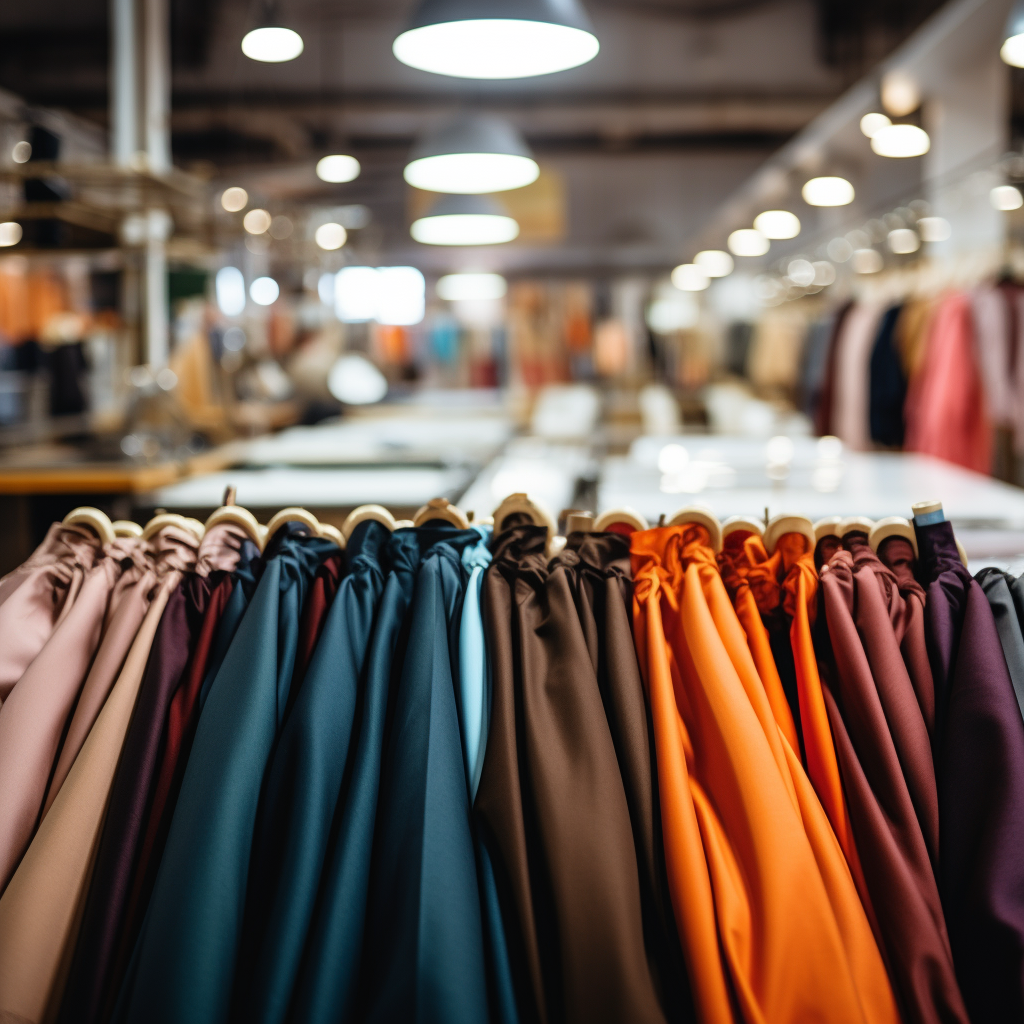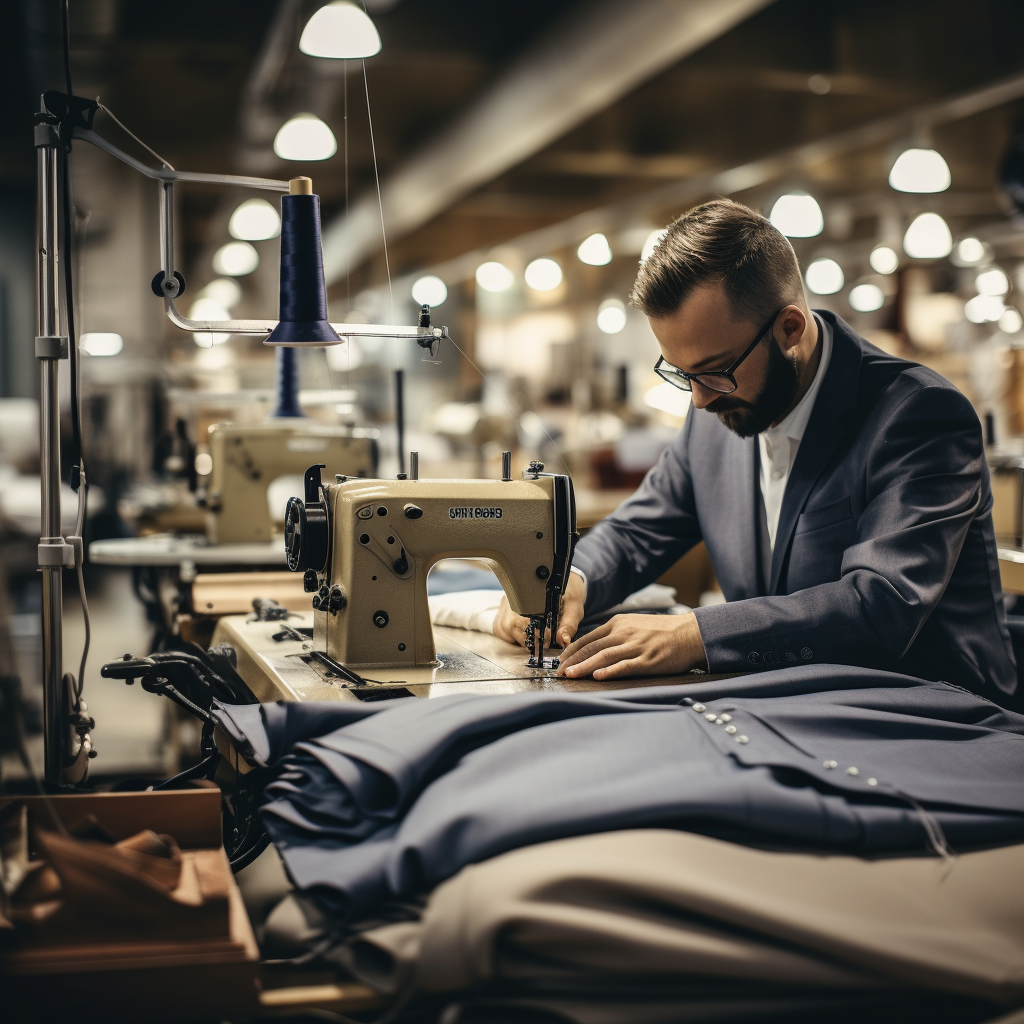Importance of the Fashion Industry
The fashion industry has long been a cornerstone of the global economy, contributing substantially to annual revenues and job markets. As of 2023, it is estimated that the fashion industry generates over $2.5 trillion globally and employs millions of people. Women’s clothing brands, in particular, form a significant portion of this industry, given the wide-ranging styles, sizes, and clothing categories they cater to.
The Role of Women’s Clothing Brands in Today’s Market
Women’s clothing brands have seen exponential growth over the past few years, influenced by factors like evolving fashion trends, consumer consciousness, and the rise of digital platforms. They now extend beyond just ‘clothing,’ encompassing the spheres of self-expression, empowerment, and identity. Brands today aren’t just selling garments; they’re selling narratives, concepts, and ideologies that resonate with their target demographics.
Purpose of the Article
This article aims to provide a comprehensive guide to individuals and groups aspiring to establish a women’s clothing brand in 2023. It will delve into the various steps and considerations involved, ranging from understanding the market and brand identity creation, to business planning, manufacturing, marketing, and legal considerations. By adhering to these steps and taking on board the given advice, one can navigate the competitive landscape of women’s fashion and potentially establish a successful brand.
At the end of each chapter, we’ll summarize the key takeaways in a table format to help readers better digest and remember the information. We hope this guide offers the tools and confidence needed to take the first steps towards launching a successful women’s clothing brand in 2023.
Stay tuned for the upcoming chapters. We will be starting with a deep dive into understanding the market, an essential starting point for any fashion brand. The clearer your understanding of the current market, the better positioned you’ll be to carve out your unique space within it.

1: Understanding the Market
Current Trends in Women’s Fashion
Fashion is a dynamic and ever-changing industry. Staying updated with the latest trends can significantly influence the success of your brand. In 2023, some noteworthy trends include sustainable fashion, oversized clothing, vibrant colors, vintage revivals, and tech-integrated clothing.
Identifying Your Target Demographic
Before starting a brand, you must clearly identify who your target demographic is. Whether it’s young adults, professional women, or vintage style enthusiasts, defining your audience will help you design a line that speaks to their interests, needs, and preferences.
The Role of Market Research
Comprehensive market research is paramount. It allows you to understand your competition, the price range for various products, customer needs, and current market gaps you can fill. The data gleaned will guide many of your decisions, from the design phase to your marketing strategy.
Case Study Examples
Consider the success of brands like Everlane and Patagonia. Everlane thrives on its transparency and ethical approach, targeting conscious consumers who value knowing where their clothes come from. Patagonia, on the other hand, carved a niche within the sustainable outdoor clothing sector, appealing to environmentally-conscious adventurers.
| Table 1: Key Women’s Fashion Trends in 2023 | Table 2: Common Target Demographics for Women’s Clothing Brands |
|---|---|
| 1. Sustainable fashion | 1. Young adults (18-24) |
| 2. Oversized clothing | 2. Professional women (25-40) |
| 3. Vibrant colors | 3. Mature women (40+) |
| 4. Vintage revivals | 4. Ethical and sustainable fashion enthusiasts |
| 5. Tech-integrated clothing | 5. High fashion aficionados |
2: Crafting Your Brand Identity
Importance of Branding in Fashion
Your brand is not merely a logo or a tagline; it’s the complete experience your customers have with your clothing line. It’s what sets you apart in the overcrowded fashion marketplace. Thus, creating a unique and strong brand identity is a pivotal step in the success of your clothing brand.
Key Elements of a Brand Identity
Brand identity consists of various elements, including your brand name, logo, voice, and overall aesthetic. It is crucial to ensure these elements align with your brand’s ethos and the expectations of your target demographic. Your brand identity should evoke a feeling of trust and reliability.
The Power of a Unique Selling Proposition (USP)
Having a USP sets you apart from your competitors and gives your customers a reason to choose you over others. It can be anything – from using only sustainably-sourced materials to offering unique designs unavailable elsewhere.
| Table: Key Components of a Strong Brand Identity |
|---|
| 1. A memorable and relevant brand name |
| 2. A distinctive logo that aligns with your brand’s style |
| 3. A brand voice and language that speak to your target demographic |
| 4. An aesthetic that’s consistent across all platforms |
| 5. A unique selling proposition (USP) that sets you apart |

3: Designing Your Clothing Line
Incorporating Current Trends into Your Designs
While staying true to your brand identity, it is important to integrate current fashion trends into your designs. However, ensure that these trends align with your brand’s aesthetic and the preferences of your target demographic.
Importance of Quality Materials and Manufacturing Processes
Regardless of the brilliance of your designs, they must be backed by high-quality materials and an impeccable manufacturing process. The quality of the finished garment greatly influences your brand’s reputation, customer satisfaction, and ultimately, your success.
Case Study: Successful Women’s Clothing Designs
Consider brands like Reformation and Aritzia, who have become go-to brands for many women, thanks to their blend of trendy and timeless designs coupled with excellent garment quality. They are perfect examples of the power of smart design strategies.
| Table: Quality Indicators in Clothing Materials and Manufacturing Processes |
|---|
| 1. Durability: High-quality materials last longer, reducing the chance of wear and tear. |
| 2. Comfort: Superior materials enhance the comfort level of the garment, impacting the wearer’s experience positively. |
| 3. Manufacturing Precision: Precise stitching and assembly result in a better fit and finish, increasing the overall aesthetic of the garment. |
| 4. Sustainability: Eco-friendly materials and processes resonate with a growing number of conscious consumers. |
4: Building a Business Plan
Why You Need a Business Plan
A robust business plan serves as the blueprint for your venture. It outlines your business goals, strategies for achieving them, potential challenges, and ways to overcome them. Investors and lenders often require it before offering financial support.
Key Components of a Fashion Brand Business Plan
A comprehensive business plan includes sections like an executive summary, company description, market analysis, organization and management structure, services or product line, marketing and sales strategies, funding request, and financial projections.
| Table: Essential Elements of a Business Plan |
|---|
| 1. Executive Summary: A brief overview of the business plan |
| 2. Company Description: Detailed information about your fashion brand |
| 3. Market Analysis: Insight into your market research, target audience, and competition |
| 4. Organization and Management: Your business structure and management team |
| 5. Services or Product Line: Details about your clothing line |
| 6. Marketing and Sales: Your strategy to attract and retain customers |
| 7. Funding Request: If seeking external funding, your requirements and how you’ll use it |
| 8. Financial Projections: Your predictions for revenue and costs |
5: Sourcing and Manufacturing
Selecting the Right Manufacturers
The selection of manufacturers plays a significant role in the quality and production cost of your clothing line. Be sure to choose manufacturers who align with your brand ethos, quality standards, and budget.
The Importance of Ethical and Sustainable Practices
In the contemporary market, many consumers prioritize ethical and sustainable practices. Brands that can demonstrate ethical sourcing and manufacturing processes often enjoy a competitive edge.
Managing Production Costs
Keeping production costs under control is critical to the financial health of your brand. Balancing between cost, quality, and ethical considerations often requires strategic planning and negotiation.
| Table: Criteria for Selecting a Manufacturer |
|---|
| 1. Quality Standards: The manufacturer’s commitment to quality |
| 2. Cost: Competitive pricing without compromising quality |
| 3. Ethical and Sustainable Practices: The manufacturer’s commitment to these values |
| 4. Experience in the Industry: The manufacturer’s track record and reputation |
| 5. Communication: Transparency, responsiveness, and ease of communication with the manufacturer |
6: Marketing Your Brand
Crafting an Effective Marketing Strategy
Once your product is ready, the next major hurdle is marketing. An effective marketing strategy is crucial to raise awareness of your brand, attract potential customers, and ultimately drive sales.
Leveraging Social Media and Influencers
In the digital age, social media platforms and influencers are powerful marketing tools. They can significantly enhance your brand’s visibility and appeal, especially among younger audiences. Instagram, Pinterest, and TikTok are particularly effective for fashion brands.
Role of E-commerce in Today’s Fashion Industry
E-commerce has become an integral part of the fashion industry. Having an easily navigable, aesthetically pleasing online store is virtually a must for any fashion brand. Additionally, partnering with established online retailers can boost your brand’s visibility and reach.
| Table: Effective Marketing Channels for Women’s Clothing Brands |
|---|
| 1. Social Media Platforms: Instagram, Pinterest, TikTok, Facebook |
| 2. Influencer Marketing: Collaborations with fashion influencers and bloggers |
| 3. Email Marketing: Regular updates, exclusive offers, and personalized recommendations |
| 4. E-commerce Platforms: Your online store and partnerships with online retailers |
| 5. Fashion Shows and Events: Participating in fashion weeks, pop-up shops, and industry events |

7: Legal Considerations and Protecting Your Brand
The Role of Business Registration
The first step in making your business official is to register it with relevant authorities, following your country’s business registration guidelines. This step often involves deciding on your business structure (LLC, corporation, etc.), which can impact your taxes and liability.
Trademarking Your Brand
Trademarking your brand name, logo, and tagline provides legal protection against unauthorized use. It’s an important step in safeguarding your brand’s identity and reputation.
Importance of Legal Compliance in Manufacturing and Marketing
Ensure your manufacturing process complies with laws concerning labor rights, safety, and environmental impact. Similarly, your marketing tactics must follow advertising and consumer protection laws to avoid legal complications.
| Table: Key Legal Considerations for a Fashion Brand |
|---|
| 1. Business Registration: Registering your business and choosing the right business structure |
| 2. Trademarking: Protecting your brand name, logo, and tagline |
| 3. Compliance with Manufacturing Laws: Following laws related to labor, safety, and environment |
| 4. Compliance with Advertising Laws: Adhering to laws concerning truth in advertising and consumer protection |
| 5. Intellectual Property Rights: Understanding and respecting the intellectual property rights of others |
Navigating through these legal steps will provide your brand with a solid foundation, protect your business interests, and ensure you’re ready to operate fully within the law. It marks the end of your initial journey to establish a women’s clothing brand in 2023 – a journey filled with creativity, strategic thinking, and business acumen. Congratulations on making it this far!
Remember, launching your brand is just the beginning. The fashion industry is ever-evolving, requiring continuous learning, adaptation, and reinvention. As you step into this exciting world, stay true to your brand identity, be attentive to your customers, and embrace the journey with passion and resilience. Best of luck!
Frequently Asked Questions
1. What is the average cost to start a women’s clothing brand?
The startup cost varies widely depending on factors like the scale of operations, choice of manufacturers, marketing methods, and more. It can range from a few thousand dollars for a small online boutique to several hundred thousand for a large-scale operation.
2. Is it necessary to have a fashion degree to start a clothing brand?
While a fashion degree can provide valuable industry knowledge and skills, it’s not a necessity. Many successful fashion entrepreneurs come from diverse backgrounds. Passion, creativity, and business acumen are the key ingredients for success in the fashion industry.
3. How can I protect my clothing designs from being copied?
You can protect your designs by applying for a design patent or registering them as trade dress. However, these processes can be complex and time-consuming, so it’s recommended to consult with a legal expert.
4. How long does it take to start a clothing brand?
The timeline varies greatly, but it typically takes at least a few months to go from the initial concept to launching your first collection. This includes time for market research, design, sourcing, manufacturing, and marketing.
5. How can I make my clothing brand more sustainable?
There are many ways to enhance sustainability, such as using eco-friendly materials, choosing manufacturers with sustainable practices, designing for longevity, and encouraging recycling or upcycling of your products.
You may also like
-
Automatic Fruit Wine Bottling Line for Small Wineries: A Complete Guide
-
How Does Plywood HSN Code Decide the GST Rate for Traders and Manufacturers?
-
POS Terminal Type: Which Is Best for Your Business?
-
How to Choose Fixed and Portable Gas Monitors for Industrial Gas Detection?
-
Simplifying Trademark Registration in Hong Kong: What Businesses Need to Know

